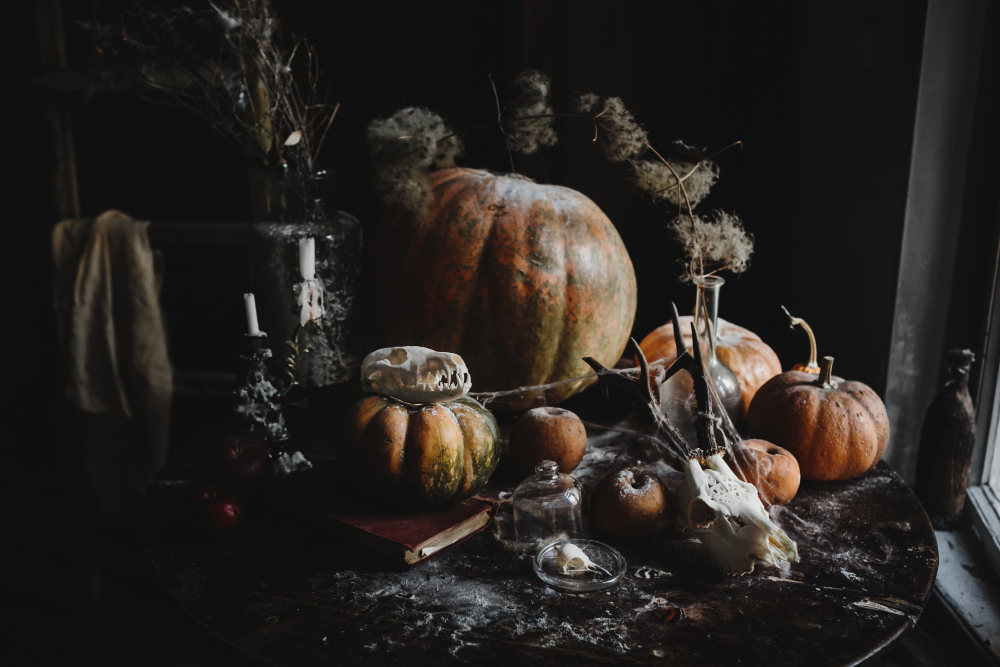
10 Tips for Capturing Spooky Halloween-Inspired Images
.png)
With Halloween just around the corner and the nights now drawing in, we thought it would be the ideal opportunity to share some of the LCE team’s top tips for capturing that perfect spooky image.
Check out below for some great moody image hacks and techniques for taking your Halloween photography to the next level.
1. Use Low-Key Lighting:
2. Opt for Prime Lenses with Wide Apertures: Using a prime lens, like a 50mm f/1.8 or 35mm f/1.4, will allow you to work in lower light conditions and achieve a shallow depth of field. This can help isolate your subject and create a dreamy eerie background blur.
3. Experiment with Long Exposures: A long exposure can make moving objects appear ghostly. Consider photographing subjects like people in flowing costumes or trees swaying in the wind using a slower shutter speed to capture movement. Use a tripod to ensure sharpness in stationary elements.
4. Incorporate Fog or Haze: We don’t all have one, but if you happen to have access to a fog machine, use it. Fog can add a mysterious eerie atmosphere to a scene, especially when backlit.

6. Infrared Photography: While this requires specialised equipment, infrared photography can turn everyday scenes into surreal ghostly landscapes. Foliage becomes white, and skies can turn black, adding a supernatural touch.
7. Experiment with Gels: Coloured gels on your lights can set the mood. Use dark blues, purples, and greens to create an eerie chilling atmosphere, especially in studio setups.
8. Textures and Layers: In post-processing, consider overlaying textures like old paper, scratches, or raindrops on your images. This can give them an old haunted appearance.
9. Play with Shadows: Use objects like lace curtains, tree branches, or handmade cutouts to cast shadows on your subject or background. These can create patterns that evoke mystery and intrigue.

Bonus Tip: Storytelling is crucial in moody photography. Think of each image as a frame from a horror movie or a page from a ghostly tale. Pose your subjects, choose your props, and set your scene in a way that tells a story, leaving viewers intrigued and curious.
But Don’t Forget the Basic Principles of Good Photography Though…
Even while chasing the perfect spooky shot, it's essential to remember the timeless principles that underpin all good photography. Keeping these fundamentals in mind will ensure that your moody images are not just haunting but also visually compelling.1. Composition:
Rule of Thirds: Even in the eeriest of shots, placing key elements on the intersecting lines of a 3x3 grid can lead to a more balanced composition.Leading Lines: Use roads, fences, or any natural lines to lead the viewer's eye into or through the photograph. In a spooky context, these can guide viewers toward a mysterious subject or focal point.
Framing: Use natural frames, like doorways or trees, to enclose a subject. This can create a sense of depth or highlight the importance of a subject.
Negative Space: Use the empty space in a photo to emphasise the loneliness or isolation of a subject, perfect for a haunting touch.
.png)
2. Focus:
Selective Focus: By choosing what parts of the image are sharp and which are out of focus, you can guide the viewer's attention. A shallow depth of field, achieved with wide apertures, can isolate a subject from its background, making it pop.Hyperfocal Distance: For wide-angle shots, especially in haunting landscapes, knowing the hyperfocal distance ensures both your main subject and the background remain in focus.
Manual Focus: In low light conditions, cameras can sometimes struggle to auto-focus. Switching to manual focus gives you full control, ensuring your subjects are always sharp.
3. Exposure:
Metering Modes: Understanding and selecting the right metering mode can make a huge difference, especially in scenes with dramatic lighting. Spot metering for instance, can be handy for moody shots with a specific light source.Bracketing: When working in challenging lighting conditions, taking multiple shots at different exposures ensures you capture the full range of detail. Later, these can be combined in post-processing for a perfectly balanced image.
ISO Sensitivity: While higher ISOs allow for faster shutter speeds in low light, they can introduce noise. Depending on your desired effect, this graininess can either enhance the gritty mood or detract from the image's clarity. Find the balance.
.png)
We hope these tips have given you some inspiration this Halloween? We’d love to see the results, so make sure you tag us in your social posts sharing your spooky masterpiece. Our favourites might even get a share on our LCE social media platforms this Halloween!




